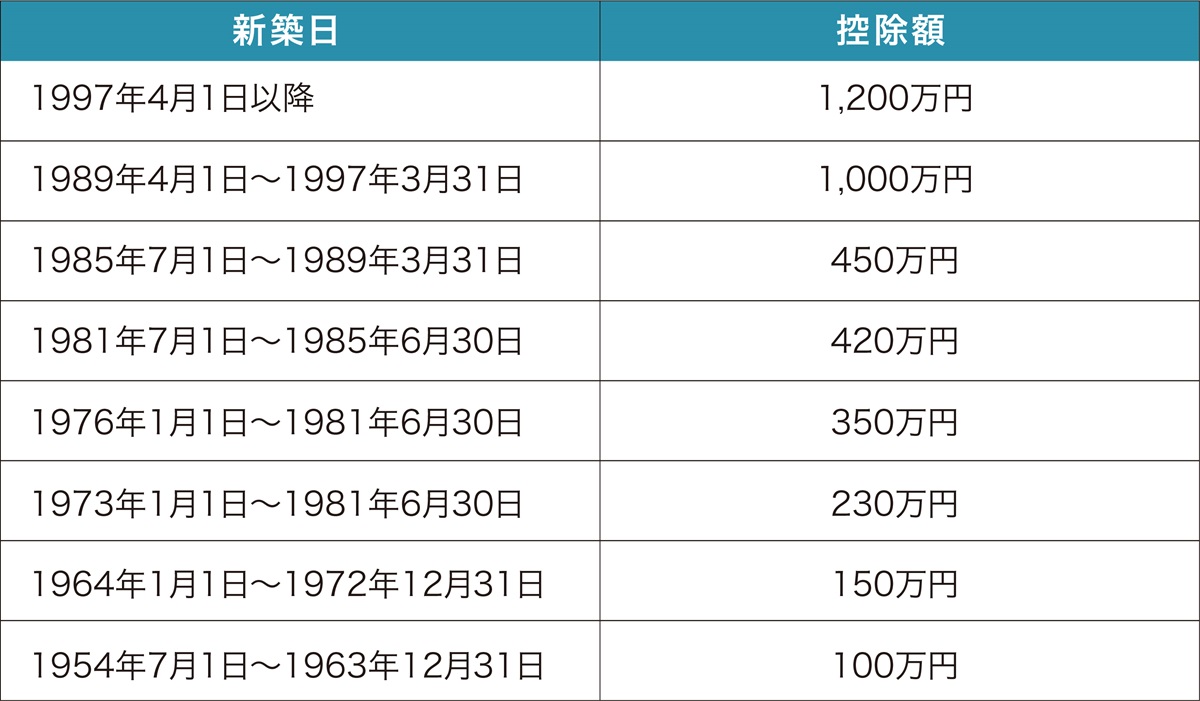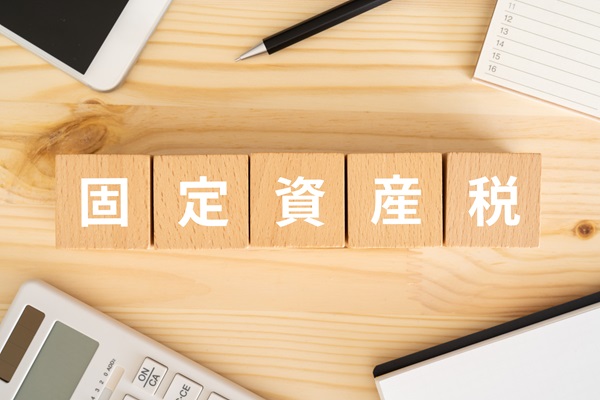When acquiring and holding real estate in Japan, several types of taxes must be paid. The following sections introduce the basic concepts of ‘real estate acquisition tax,’ ‘fixed asset tax,’ and ‘city planning tax.’
What is the real estate acquisition tax?
The "real estate acquisition tax" refers to the local tax that must be paid when acquiring real estate such as land or buildings, with land and buildings being taxed separately. The "real estate acquisition tax" is a one-time tax payable upon acquiring the property, not an annual tax. The taxpayer is required to submit a real estate acquisition tax declaration form within a certain period after acquiring the property and pay the tax to the competent authority of the prefecture where the property is located.
[Calculation Method for Tax Amount]
Assessed value of fixed assets × Tax rate 4%.
The assessed value of fixed assets is based on the fixed asset valuation standards established by the Ministry of Internal Affairs and Communications, and the assessed amount is determined by local governments. For land, the assessed value is typically based on approximately 70% of the officially announced land price. However, the actual assessed value is determined by factors such as the location and area of the land, and the assessed value is updated every three years. To check the latest assessed value for fixed asset tax, refer to the ‘Fixed Asset Tax Taxation Ledger’ prepared by local governments.
[Exemption Measures]
To promote the acquisition and circulation of residential properties, the Ministry of Land, Infrastructure, Transport and Tourism has reduced the real estate acquisition tax rate for newly purchased residential properties to 3%.
● For newly built homes, a deduction of 12 million yen will be applied to the assessed value of fixed assets, resulting in a maximum reduction of 360,000 yen (12 million yen × 3%).
The real estate acquisition tax for the newly constructed portion of a residential building is calculated as follows:
(Assessed value of the building - 12 million yen) × 3%.
Conditions for Exemption Measures for Newly Built Homes
● The property must be used for residential purposes.
● The total floor area of the residence must be between 50 square meters (for non-detached rental homes, it must be 40 square meters) and 240 square meters.
For second-hand homes, the calculation standard will be ‘fixed asset tax assessed value minus the deduction amount specified by the building’s age.’
Real estate acquisition tax = (Assessed value of the building - Deduction amount based on the year of construction) × 3%
Please refer to the following deduction amounts specified by the Tokyo Metropolitan Government based on the building’s age:

Conditions for Exemption Measures for Second-Hand Homes
● The property must be for owner-occupied residential use.
● The total floor area of the acquired residence must be between 50 and 240 square meters (including storage rooms, garages, and communal areas of the apartment).
● The building must have been constructed after January 1, 1982 (Showa 57) and must meet the new earthquake resistance standards.
The exemption measures for "land" are more complex and will be calculated using the following formula:
Real estate acquisition tax for land = ((Assessedvalueoftheland×1/2)×3%)-Exemption amount
The calculation difference between land and building acquisition taxes lies in that, when calculating the real estate acquisition tax for land, the assessed value is first multiplied by the tax rate and then the deduction amount is subtracted. Additionally, the higher of the following deduction amounts will be applied.:
● (Assessed value of the land per square meter × 1/2) × (Taxable floor area of the residence※ × 2) × 3%
● 45,000 yen
※ The maximum limit is 200 square meters.
The price per square meter of land is calculated by dividing the fixed asset assessed value by the land area. According to the reduction measures, the fixed asset assessed value will be halved. Additionally, this measure only applies to buildings acquired before March 31, 2024 (Reiwa 6).
Conditions for Exemption Measures for Land Acquisition Tax
For Newly Built Homes:
When constructing a new residence, the exemption measures for land acquisition tax apply to those that meet the requirements for real estate acquisition tax for newly built homes and fulfill at least one of the following three conditions:
● A residential building must be constructed on the land within three years from the date of land acquisition, and the land must be continuously owned until the completion of the construction.
● If the land was acquired before the construction of the residence and is transferred to another person within three years of acquiring the land, the recipient must build a residence on that land.
● The land ownership of the residence must be acquired by the builder within one year after the construction of the residence.
For Second-Hand Homes:
● The owner of the land and the owner of the residence must be the same person.
● The residence must meet the criteria for tax reductions for second-hand homes, and the timing of land acquisition must be within one year before or after the acquisition of the residence.
In principle, the exemption measures for real estate acquisition tax require a declaration system, and the owner must apply to the relevant authorities, such as the tax office of each prefecture.
The deadline for submitting the application is generally within 60 days after acquiring the property, and it can be processed simultaneously with the application for real estate acquisition tax.
The documents required for application may vary depending on the local government. In addition to submitting the real estate acquisition tax exemption declaration form, the owner must also provide documents such as the "purchase contract," "registration details certificate," and "inspection certificate" for the property. It is advisable to confirm relevant details with the prefectural tax office and other relevant authorities in advance.
What is the fixed asset tax?

The ‘fixed asset tax’ is a local tax levied annually on individuals who own depreciable assets such as land, houses, commercial equipment, and vehicles as of January 1 each year. Owners of fixed assets must pay this tax every year.
[Calculation Method for Tax Amount]
Fixed asset tax amount = Assessed value of fixed assets × Tax rate of 1.4%
The tax amount for fixed asset tax is calculated based on the assessed value of fixed assets, similar to the method used for real estate acquisition tax. However, if the value of the fixed assets owned is below the following standards: land under 300,000 yen, houses under 200,000 yen, and depreciable assets (assets used for commercial purposes excluding real estate) under 1,500,000 yen, then no fixed asset tax is required.
[Exemption Measures]
● Small-scale residential land (for each house up to 200 square meters) ... Exempted to 1/6
● General residential land (excluding small-scale residential land) ... Exempted to 1/3
The fixed asset tax exemption measures related to newly built residences apply to homes constructed before March 31, 2022. According to regulations on exemption amounts, the tax amount is halved for the first three years for newly built detached houses, and for the first five years for newly built apartments. Furthermore, if the new building is certified as a "long-term excellent house," the tax amount for detached houses is halved for five years, and for apartments, it is halved for seven years.
[Conditions for Tax Exemption Measures]
● The residential portion of new constructions must constitute more than half of the total floor area.
● The floor area must be between 50 and 280 square meters.
Additionally, when existing homes undergo renovations or improvements, such as "barrier-free renovations," "energy-saving renovations," and "earthquake-resistant renovations," they may also qualify for tax reductions if certain conditions are met. Similar to real estate acquisition tax, exemption measures for fixed asset tax also require declaration. The application period and required documents may vary by local government, so it is advisable to check with the prefectural tax office in advance.
What is the city planning tax?

The "city planning tax" is a local tax imposed to fund urban planning projects and land readjustment projects. Local governments levy this tax annually on individuals who own land or houses within urbanized areas. The term "urbanized area" is less commonly used; it refers to one of the designated urban planning zones under the Urban Planning Act. An "urbanized area" is defined as "an area where urban development has already formed and areas that are prioritized for planning within the next ten years." This refers to places that are already thriving like urban areas or those that have potential for urbanization due to the construction of public facilities, etc.
[Tax Calculation Method]
Assessed value of fixed assets × Tax rate (set by local governments, with a maximum of 0.3%)
To check whether your property is located within an urbanized area, you can do the following:
● Inquire with local authorities.
● Seek assistance from real estate companies.
● Search online for‘City Planning Map ●●● (name of the municipality)’
[Exemption Measures]
If the property is constructed for personal residence, such as a house or rental apartment, the city planning tax can be exempted as follows:
● Small-scale residential land (up to 200 square meters per residence) ... Exempted to 1/3
● General residential land (exceeding small-scale residential land) ... Exempted to 2/3
The exemption for city planning tax does not require a declaration. Notices for fixed asset tax and city planning tax for the same year will be mailed together. Payment deadlines vary by location, so please check the relevant websites for accurate information.











